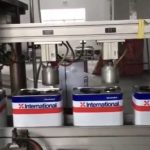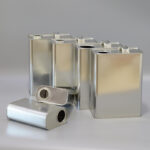SAE for label interpretation: viscosity value
The main function of engine oil is lubrication-when the engine is working, there are many parts that perform frictional movement. Only qualified engine oil can reduce the wear of engine parts and extend the service life. In addition to lubrication, engine oil also has functions such as cooling, cleaning, sealing, rust and corrosion prevention, shock absorption and buffering. Each oil barrel has a series of specifications, such as SAE 0W-30 or SM 0W-40. What do they represent?
SAE is the abbreviation of American Society of Automotive Engineers, and the number indicates the viscosity value of the oil. Take 10W-40 as an example, "W" means winter, the number 10 means that this oil is suitable for the lowest external temperature of -25℃, and the number 40 means that it is resistant to external high temperatures of 40℃. The effect of temperature on the viscosity of oil: the temperature increases, the viscosity decreases; the temperature decreases, the viscosity increases. So what is the applicable external ambient temperature represented by the different SAE labels? The smaller the number in front of W, the better the low-temperature fluidity of the oil, which means that the lower the ambient temperature available for use, the better the protection of the engine during cold start. The higher the number behind W, the higher the kinematic viscosity of the oil at 100°C. In winter, if the oil with higher viscosity at low temperature is used, it will add additional losses to the starter motor, battery, etc., and at the same time increase the fuel consumption due to the increase in internal resistance; in summer, if the oil with insufficient high temperature performance is used, it will be difficult to operate the engine. The formation of sufficient protective film, which will cause insufficient lubrication and lead to mechanical wear.
API for label interpretation: engine oil performance
API is the abbreviation of American Petroleum Institute, API grade represents the grade of engine oil quality, it uses simple codes to describe the working ability of engine oil.
SN: Only for gasoline engines
CN: Only for diesel engines
SN/CN: General purpose gasoline and diesel engines
According to different letter indicators, the oil grade can also be arranged. The lower the letter, the better the performance of the oil, and there will be more additives used to protect the engine in the oil.
What are the types of oil
According to refining and synthesis technology, engine oil is divided into three types: mineral oil, semi-synthetic and synthetic oil. Different from traditional natural products, in terms of grade: fully synthetic motor oil>semi-synthetic motor oil>mineral oil. The stability and anti-aging ability of fully synthetic motor oil is the best, so some high-end car brands often specify the use of a certain brand of fully synthetic motor oil.
How to choose reliable engine oil
SAE refers to the car maintenance manual. Before launching a new car, the car manufacturer has done various tests. There are clear instructions for which brand of oil to use under what circumstances, and the manufacturer’s recommendations are the most appropriate.
The higher the API, the better. As for the oil quality, of course the higher the better. Under the same label, the better quality oil will have a better performance in terms of emissions.
Choose semi-synthetic/fully synthetic mineral oil, although it is cheap, but its performance is not as good as semi-synthetic and fully synthetic motor oil. Semi-synthetic is ideal, while full-synthesis can take care of the vehicle more comprehensively. Although it is a bit expensive, it is worth it.
Don't be greedy for small profits, so as not to buy fakes. Don't be greedy for cheap and buy goods of unknown origin. The use of fake engine oil can do a lot of damage to the car.










